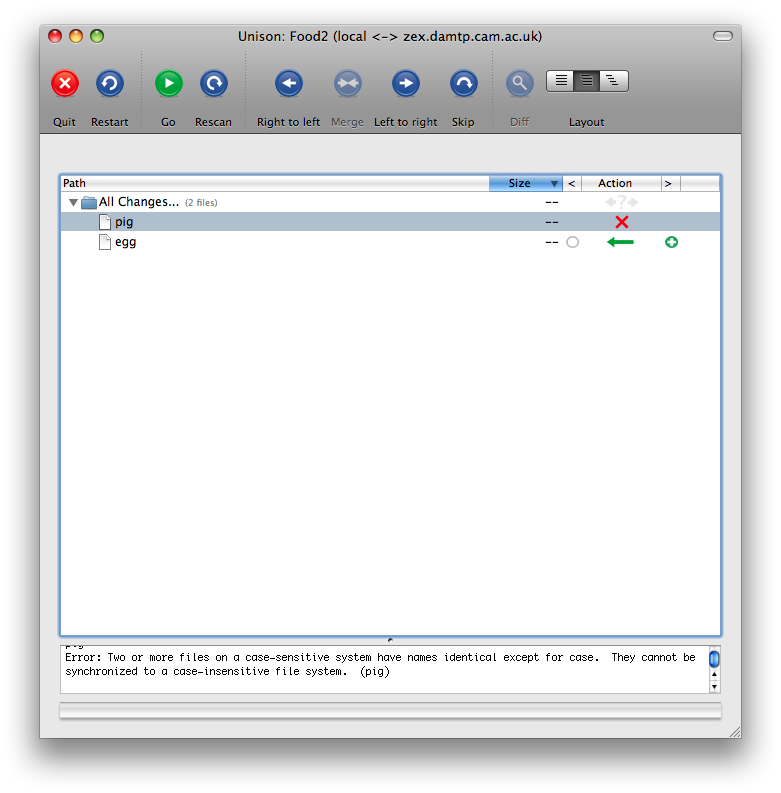
- #MAC WATCH DIRECTORY FOR CHANGES AND RUN COMMAND HOW TO#
- #MAC WATCH DIRECTORY FOR CHANGES AND RUN COMMAND MAC OSX#
- #MAC WATCH DIRECTORY FOR CHANGES AND RUN COMMAND FULL#
- #MAC WATCH DIRECTORY FOR CHANGES AND RUN COMMAND CODE#
#MAC WATCH DIRECTORY FOR CHANGES AND RUN COMMAND CODE#
The Console window allows you to run Lua code fragments and calculate values of Lua expressions. You will see a prompt in the Output window where the text is expected to be entered. The Output window is also used to enter the text your program may read. The Output window captures the output of the programs you run, plus any errors and additional messages you may get during execution of those programs. You will see a message in the Output window when the program is stopped. To abort the program from the IDE you can go to Project | Stop Process. The Output window will show the output of the program (if any) and some messages from the IDE that detail what script is being executed and from what directory. This will run your program in a separate process using the interpreter you selected to run it by default this is the Lua interpreter, which executes your code in LuaJIT. To execute a program you can select Project | Run menu command. The IDE will restore the editor tabs you are using the next time you start it. You will be prompted to save any unsaved changes. To quit the IDE, select the File | Quit menu command. If the program does not have a name yet, you will be asked to provide a name for it. To save a program you can select the File | Save menu command at the top of the window or use its shortcut Ctrl-S ( Cmd-S on macOS). The editor will open that file for you in a new tab, or will activate one of the existing tabs if the file is already opened. Or, you can double click on the file name in the Project panel on the left. To open a program or file you can select the File | Open menu command or use its shortcut Ctrl-O ( Cmd-O on macOS). You can also close those pages when you don’t need them by using the File | Close Page menu command or its shortcut Ctrl-W ( Cmd-W on macOS). You can switch between pages by clicking on those tabs. Note that you have to put the “./” in front of your filename, in order to tell Terminal to look for the file in the current directory.The IDE allows you to open several programs or files and work on them at the same time.Įach file is opened in its own page, with its name in a tab at the top of the page.
#MAC WATCH DIRECTORY FOR CHANGES AND RUN COMMAND FULL#
Now to run your batch file, you just need to either specify the full path to the batch file, or if you are already in the directory where it is located, you can type: You’ll need to be in the directory that batchscript is in for the following command to work (or you’ll need to specify its full path):

With a permission of 5, you can execute the file but not write to it.Īnother way is for you to change permissions of the file is to go into Terminal, and enter this command that changes its permissions. With a permission of 7, you can write to the file and execute it. What 755 does is to give permissions of 7 to you, 5 to your user group, and 5 to everyone else.

So for example, if your batch file is named batchfile, one way to change its permissions is to right-click on it, click on “Show Info”, and then change the permissions under “Permissions” to show 755. In Windows, that’s all that you need to do, but for the Mac, you’ll need to make sure that you edit your batch file’s permissions so it is executable. txt extension preferably, but that really doesn’t matter…it just looks more right that way).

What you need to do is to put all the commands you want into a plain text document, and save it with a name (without the.
#MAC WATCH DIRECTORY FOR CHANGES AND RUN COMMAND MAC OSX#
Mac OSX is unix-based, so I could use the unix equivalent (which is called a script too).
#MAC WATCH DIRECTORY FOR CHANGES AND RUN COMMAND HOW TO#
I was facing the same situation in Mac OSX when I realised that I didn’t know how to create a batch file in Mac OSX. With a batch file, you save all the commands into one file, and just run the batch file, instead of your gazillion commands individually. I use batch files sometimes when I was using Windows because it saves a lot of time when you need to run a batch of commands frequently.


 0 kommentar(er)
0 kommentar(er)
